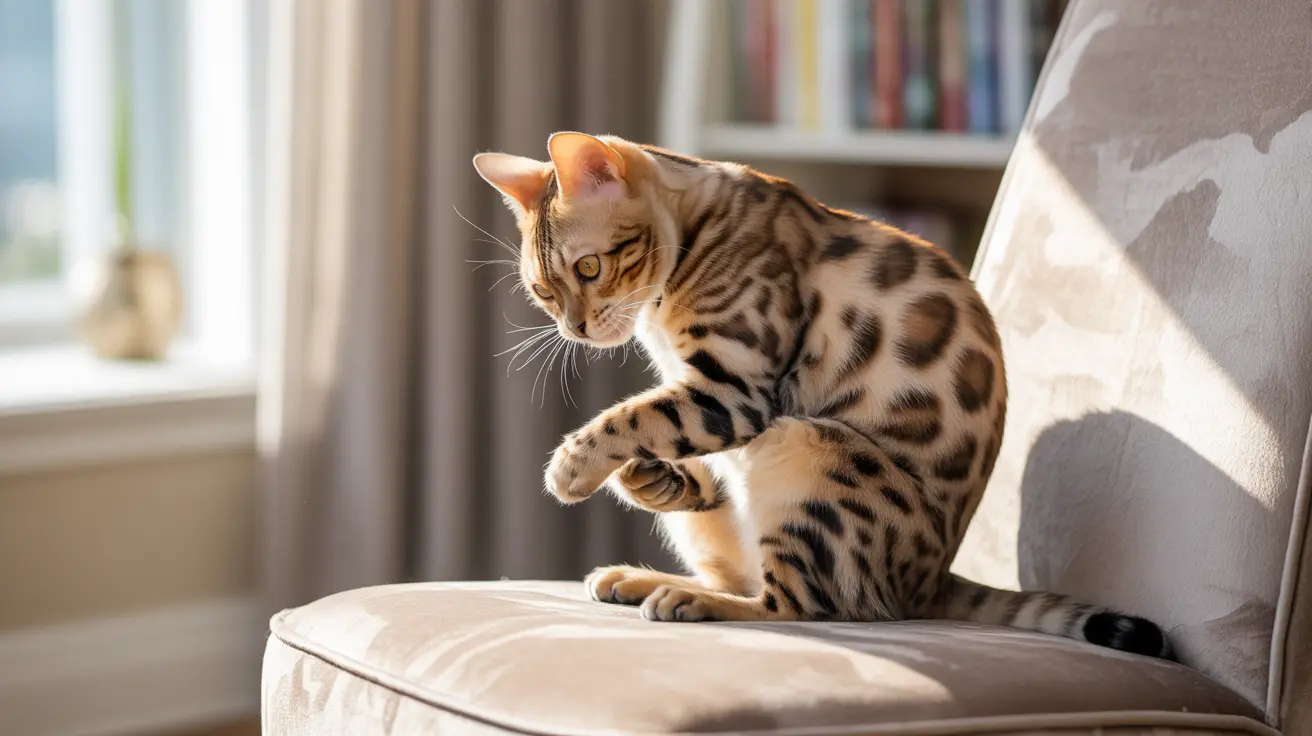What Exactly Is Cat Fur Mowing?
Fur mowing, also known as psychogenic alopecia or overgrooming, is a behavioral condition where cats excessively groom specific areas of their body. Unlike normal grooming behavior, fur mowing is compulsive and can result in visible hair loss, skin irritation, and even open sores in severe cases.
Common Causes of Fur Mowing
Medical Triggers
Many cases of fur mowing stem from underlying medical conditions, including:
- Allergies (food, environmental, or flea-related)
- Skin infections or parasites
- Hormonal imbalances
- Pain from arthritis or injury
- Neurological conditions
Behavioral and Environmental Factors
When medical causes are ruled out, fur mowing often relates to:
- Stress and anxiety
- Changes in the household
- Boredom or lack of stimulation
- Conflict with other pets
- Separation anxiety
Identifying and Diagnosing Fur Mowing
Look for these telltale signs of fur mowing:
- Symmetrical hair loss patterns
- Rough or stubbly texture in affected areas
- Redness or irritation of the skin
- Increased grooming frequency
- Difficulty interrupting grooming sessions
Treatment Options and Solutions
Medical Interventions
Your veterinarian may recommend:
- Allergy testing and treatment
- Anti-inflammatory medications
- Antibiotics for skin infections
- Parasite prevention
- Pain management
Behavioral Solutions
Address psychological causes through:
- Environmental enrichment
- Stress reduction techniques
- Pheromone therapy
- Behavioral modification
- Anti-anxiety medications (when prescribed)
Prevention Strategies
To help prevent fur mowing:
- Maintain regular veterinary check-ups
- Provide adequate environmental enrichment
- Keep a consistent daily routine
- Monitor stress levels
- Address conflicts between pets promptly
Frequently Asked Questions
What causes my cat to mow its fur and develop bald patches?
Fur mowing can be caused by medical issues like allergies, parasites, or skin infections, or behavioral problems such as stress, anxiety, or boredom. A veterinary examination is necessary to determine the exact cause.
How can I tell if my cat's fur mowing is due to stress or a medical issue?
The pattern and location of hair loss, presence of skin irritation, and timing of the behavior can provide clues. Medical causes often show additional symptoms like itching or inflammation, while stress-related mowing may coincide with environmental changes.
What are the best treatments to stop my cat from overgrooming and losing fur?
Treatment depends on the underlying cause. Medical conditions require appropriate veterinary care, while behavioral issues may need environmental modifications, stress reduction, and possibly behavior modification therapy or medication.
Which areas of my cat's body are most commonly affected by fur mowing?
Common areas include the belly, inner thighs, forearms, and along the spine. The pattern is often symmetrical when the cause is behavioral rather than medical.
When should I take my cat to the veterinarian for excessive grooming behavior?
Seek veterinary care if you notice bald patches, skin irritation, or if the grooming behavior becomes obsessive or interferes with normal activities. Early intervention typically leads to better outcomes.
Conclusion
Fur mowing in cats is a complex issue that requires careful attention and often professional intervention. By understanding the causes and signs of this behavior, you can better help your feline friend recover and prevent future episodes. Remember that early intervention is key to successful treatment, whether the cause is medical or behavioral.






